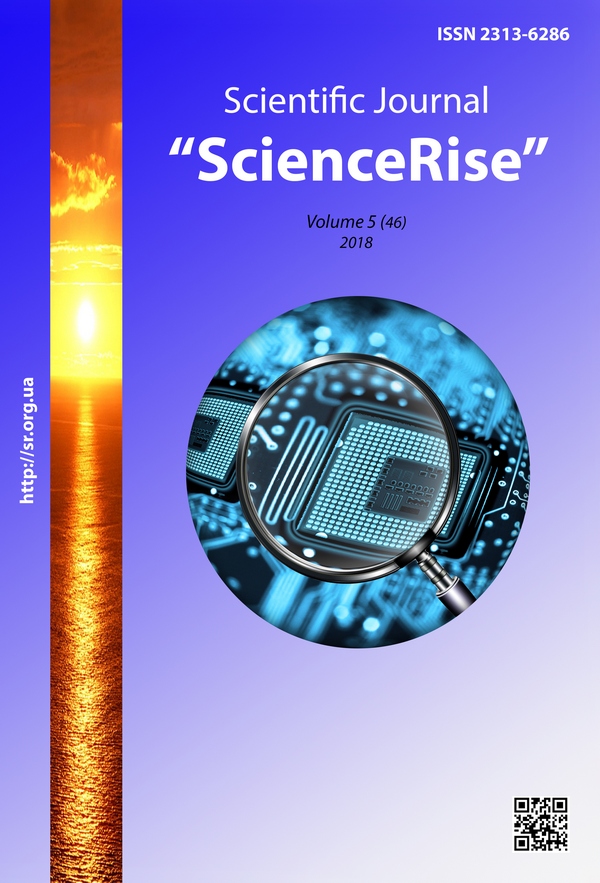The development of new generation of health nanoproducts with beans and spicy vegetables for the restaurant business enterprises
DOI:
https://doi.org/10.15587/2313-8416.2018.131486Keywords:
mechanical destruction, mechanical activation, destruction, activation, transformation, nanoproducts, nanostructured supplements, amino acid score, stream-thermal treatment, finely dispersed low-temperature grindingAbstract
The work is devoted to the study of the influence of processes of steam-thermal treatment, finely dispersed grinding, accompanied by processes of mechanical degradation, mechanical activation, with the use of modern equipment for the conservation of bean protein molecules, their destruction, activation and transformation of bound amino acids into free form and the development of a new generation of health nanoproducts on their basis for enterprises of the restaurant business (soups - puree, sandwich spreads, snacks, protein paste, fillings, dip sauces, etc.) enriched with cryo supplements and spicy vegetables
References
FAO/WHO/UNU Dietary protein quality evalution in human nutrition (2013). Report of an FAO Expert Consultation. FAO food and nutrition paper No. 92. Rome: Food and agriculture organization of the united nations, 66.
Herasymenko, S. S., Herasymenko, V. S. (2013). Statystychna kharakterystyka spozhyvannia produktiv kharchuvannia naselenniam Ukrainy. Statystyka Ukrainy, 2, 28–33.
Pavlyuk, R., Pogarska, V., Kotuyk, Т., Pogarskiy, A., Loseva, S. (2016). The influence of mechanolysis on the activaton of nanocomplexes of heteropolysaccharides and proteins of plant biosystems in developing of nanotechnologies. Eastern-European Journal of Enterprise Technologies, 3 (11 (81)), 33–39. doi: 10.15587/1729-4061.2016.70996
Pavlyuk, R., Pogarska, V., Balabai, K., Pavlyuk, V., Kotuyk, Т. (2016). The effect of cryomechanodestruction on activation of heteropolysaccaride-protein nanocomplexes when developing nanotechnologies of plant supplements. Eastern-European Journal of Enterprise Technologies, 4 (11 (82)), 20–28. doi: 10.15587/1729-4061.2016.76107
Pavlyuk, R., Pogarska, V., Matsipura T., Maksymova, N. (2015). Development of nanotechnology of fine frozen champignon puree (agaricus bisporus). Eastern-European Journal of Enterprise Technologies, 6 (10 (77)), 24–28. doi: 10.15587/1729-4061.2015.56145
Pavlyuk, R., Pogarska, V., Yurieva, O., Skripka, L., Abramova, T. (2016). Technology of healthy processed cheese products without melting salts with the use of freezing and non-fermentative catalysis. Eastern-European Journal of Enterprise Technologies, 5 (11 (83)), 51–61. doi: 10.15587/1729-4061.2016.81415
Pavlyuk, R., Pogarskаya, V., Radchenko, L., Yurieva, O., Hasanova, H., Abramova, T., Kolomiiets, T. (2015). The development of technology of nanoextracts and nanopowders from herbal spices for healthful products. Eastern-European Journal of Enterprise Technologies, 3 (10 (75)), 54–59. doi: 10.15587/1729-4061.2015.43323
Pavlyuk, R., Pogarska, V., Mikhaylov, V., Bessarab, O., Radchenko, L., Pogarskiy, A. et. al. (2018). The study of bas complex in chlorophyllcontaining vegetables and development of healthimproving nanoproducts by a deep processing method. Eastern-European Journal of Enterprise Technologies, 2 (11 (92)), 48–56. doi: 10.15587/1729-4061.2018.127158
Galland, L. (2013). Functional Foods: Health Effects and Clinical Applications. Encyclopedia of Human Nutrition, 366–371. doi: 10.1016/b978-0-12-375083-9.00130-6
Tur, J. A., Bibiloni, M. M. (2016). Functional Foods. Encyclopedia of Food and Health, 157–161. doi: 10.1016/b978-0-12-384947-2.00340-8
James, S. J., James, C. (2014). Chilling and Freezing. Food Safety Management, 20, 481–510. doi: 10.1016/b978-0-12-381504-0.00020-2
Shi, L., Li, W., Sun, J., Qiu, Y., Wei, X., Luan, G. et. al. (2016). Grinding of maize: The effects of fine grinding on compositional, functional and physicochemical properties of maize flour. Journal of Cereal Science, 68, 25–30. doi: 10.1016/j.jcs.2015.11.004
Balaz, P. (2010). Mechanochemistry in Nanoscience and Minerals Engineering. Woodhead Publishing Limited, 400.
Roberfroid, M. B. (2002). Global view on functional foods: European perspectives. British Journal of Nutrition, 88 (2), 133–138. doi: 10.1079/bjn2002677
Weststrate, J. A., van Poppel, G., Verschuren, P. M. (2002). Functional foods, trends and future. British Journal of Nutrition, 88 (2), 233–235. doi: 10.1079/bjn2002688
Mine, Y., Li-Chan, E., Jiang, B. (2010). Bioactive proteins and peptides as functional foods and nutraceuticals. Wiley-Blackwell. A John Wiley & Sons, Inc., Publication, 2039. doi: 10.1002/9780813811048
Phillips, G. O., Williams, P. A. (2011). Handbook of food proteins. Woodhead Publishing Limited, 419. doi: 10.1533/9780857093639
McNeill, S., Monroe, A. (2008). High-quality protein promotes optimal health. Diet. Health. Nutrition, 19–21.
Kaprel'yants, L. V. (2015). Prebiotiki: khimiya, tekhnologiya, primenenie: monografiya. Kyiv: EnterPrint, 252.
Gibson G., Roberfroid M. Handbook of Prebiotics. Vol. 4. London: CRS Press, 2008. Р. 22–42.
Sousa V. M. C. de, Santos E. F. dos, Sgarbieri V. C. The Importance of Prebiotics in Functional Foods and Clinical Practice // Food and Nutrition Sciences. 2011. Vol. 2, Issue 2. P. 133–144. doi: 10.4236/fns.2011.22019
Downloads
Published
Issue
Section
License
Copyright (c) 2018 Raisa Pavlyuk, Viktoriya Pogarskaya, Ludmila Radchenko, Katerina Dudnyk, Тatyana Kotuyk, Anna Radchenko, Leonida Bilenko

This work is licensed under a Creative Commons Attribution 4.0 International License.
Our journal abides by the Creative Commons CC BY copyright rights and permissions for open access journals.
Authors, who are published in this journal, agree to the following conditions:
1. The authors reserve the right to authorship of the work and pass the first publication right of this work to the journal under the terms of a Creative Commons CC BY, which allows others to freely distribute the published research with the obligatory reference to the authors of the original work and the first publication of the work in this journal.
2. The authors have the right to conclude separate supplement agreements that relate to non-exclusive work distribution in the form in which it has been published by the journal (for example, to upload the work to the online storage of the journal or publish it as part of a monograph), provided that the reference to the first publication of the work in this journal is included.

